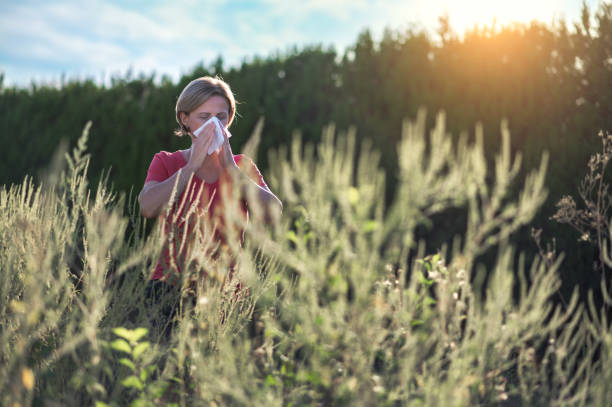
As the summer draws to a close and the school year nears, you may find yourself with tears in your eyes. But it's not for sentimental reasons. It's because mid-to-late August is also when fall allergy season starts in earnest. Seasonal allergies, also known as hay fever, can cause nagging and debilitating symptoms like nasal congestion, watery and itchy eyes, a scratchy throat, and dry cough.
If you are among the 24 million people in the U.S. who suffer from hay fever, now is the time to start with precautionary measures. Don’t wait until your nose is running and your eyes are itchy and red.
Here’s what you need to know to see — and smell — your way through the worst of the fall allergy season. Learn more about the causes of hay fever and what prevention tips and strategies can help ease your discomfort.
Common fall allergies
Weed pollen is the most common fall allergy, according to Rebecca Friess, MD, who specializes in allergy and immunology at Summit Health in Montclair, N.J. Ragweed, a plant that grows almost everywhere and is especially prevalent in the Northeast, is the biggest culprit.
Other triggering plants include tumbleweed, sagebrush, and burning bush. They all produce pollen from mid-August until freezing temperatures arrive in November.
“Mold spores cause allergy symptoms, especially as the leaves start to fall and collect in wet piles on the ground,” explains Dr. Friess. She also points out that soggy wood, such as rotting tree stumps, is a prime environment for mold. That means the fall rainy season, whether unseasonably warm or cool, can affect your symptoms.
There are roughly 1,000 species of mold in the U.S., according to the American College of Allergy, Asthma and Immunology. Most of them are not visible to the naked eye.
When mold spores become airborne, explains Dr. Friess, they can cause an allergic reaction in people who have mold allergies. This may explain why allergies are worse for people on breezy days when there is more mold and pollen in the wind. Smoke from fire pits and wildfires, along with air pollution, can also exacerbate allergies.
Symptoms of fall allergies
Allergic reactions to environmental triggers mimic those of cold viruses. Unlike colds, symptoms of hay fever and fall allergies remain steady instead of peaking and then clearing up. They include:
- Nasal congestion
- Runny nose
- Sneezing
- Itchy, watery eyes
- Scratchy throat
- Dry, persistent cough
- Wheezing
- Shortness of breath
- Sinus headaches and migraines
- Fatigue
How allergies are affected by age
Unlike food allergies, which may go away or change as you get older, environmental allergies typically do not improve over time. “We tend to see them get worse as we get older,” says Dr. Friess. Every season you are exposed to an allergen like ragweed or mold makes you more sensitive, not less.
Seniors are also at greater risk of complications from allergies because they may have other underlying conditions that can lead to problems, such as lung disease.
Regardless of age, “untreated allergies are a risk factor for disease,” she adds. For instance, nasal congestion caused by allergies can turn into sinus infections, while wheezing or shortness of breath can lead to asthma attacks.
Best ways to prepare for allergy season
First, know what your main allergies are. Many patients know they're symptomatic at certain times of the year, but they don't know what their specific triggers are because they’ve never been tested. Allergists like Dr. Friess use a skin prick test — that exposes you to small amounts of common allergens — to find out what your body is allergic to.
Then, you can use that information to help you prevent the symptoms of hay fever. For example, you can track pollen and spore counts, and stay inside when they're particularly high or on breezy days when they're in the air. You can also keep your windows closed during mid-morning hours or after a rainstorm, both of which are times when pollen counts soar.
Allergy sufferers also should avoid atmospheric conditions that are hot and humid, which favors the growth of mold, when pollen is active. It can be helpful to use a dehumidifier in your home when the heat index cranks up or an air purifier with a filter specifically designed for allergies, which traps airborne pollen and spores.
It is also smart to invest in oral antihistamines, over-the-counter eye drops, and nasal sprays. People with severe allergies may also take prescription medication. Follow the treatment plan recommended by your physician.
“Whatever your regimen is, we suggest you start in advance and continue throughout the season,” says Dr. Friess. “If that doesn't help, make an appointment with an allergist and get tested. There are many prescription medications available as well. You do not need to suffer during the allergy season.”
For people with severe symptoms, allergy shots are a more long-term treatment option that can help desensitize the body to specific allergens. The shots, which are initially administered weekly and then extended to monthly injections, contain a tiny amount of the allergen the patient is reacting to. The repeated exposure teaches the body to tolerate the allergen.
